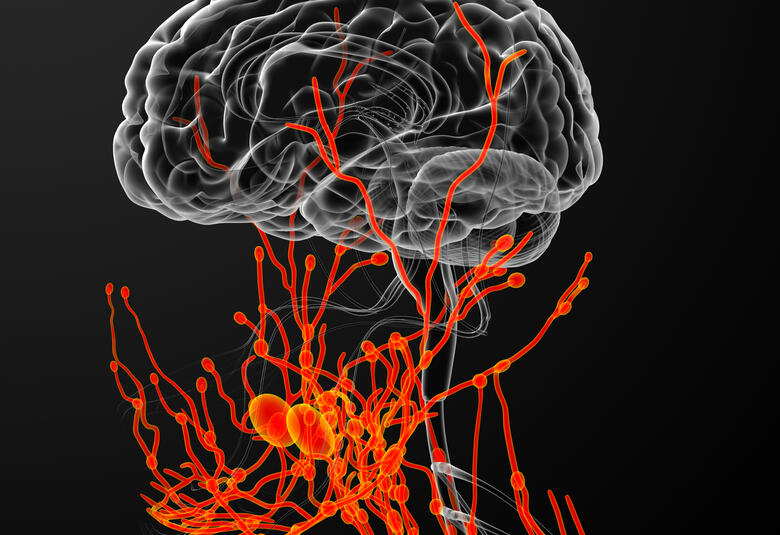Our understanding of tau pathology, a critical component of Alzheimer’s Disease development, will enable improved diagnostic staging and disease monitoring, and perhaps the potential to halt neuronal decline. In this well-attended symposium, four speakers outlined recent advances in tau pathology, including the use of new neuroimaging techniques.
Early tau pathology is independent of amyloid-beta and does not develop sequentially in AD
Charles Duyckaerts (Laboratoire de neuropathologie Raymond Escourolle, France) explored new ideas around tau pathology in Alzheimer’s Disease (AD) and the relationship with amyloid-beta (Aβ). A recent analysis of four positron emission tomography (PET) studies showed that tau-PET may be helpful for pathological staging. Among individuals defined as tau-negative, ~40% were Aβ positive, as opposed to ~90% among those considered tau-positive.1
Interestingly, a longitudinal PET study demonstrated that observable rates of short-term serial accumulation of tau only occurred in individuals with abnormal Aβ, and that as the disease progresses, tau accumulation does not occur in a sequential pattern from one area of the brain to another.2 Immunohistochemistry studies have shown that Aβ accumulation occurs in entorhino-hippocampal areas in which tau aggregates are already present – indicating that primary age-related tauopathy (tau aggregation in the entorhinal cortex and hippocampus with no/minimal Aβ) is a key feature of AD development.3 Studies in the subiculo-fornico-mammillary system suggest that tau pathology is also related to neurological connections.
A study of the Thal stages of amyloid deposition (Aβ) and Braak stages of neurofibrillary tangles (tau) of 368 cases of neurodegenerative diseases demonstrated a relationship between Aβ and tau deposits, although the nature of this is unclear. Recent findings suggest that although the initiation of tauopathy is independent of the accumulation of Aβ,4 tauopathy progression is promoted by increasing Aβ.
tauopathy progression may be promoted by increasing Aβ
Does precortical tau pathology represent the earliest stages of Alzheimer’s Disease?
By understanding why AD always starts in the same part of the brain, disease progression could be monitored and treatments developed to stop the stereotypical spread of the disease, argued Lea Grinberg (University of California, USA and University of São Paulo Medical School, Brazil).
Neurofibrillary tangle (NFT) burden is highly predictive of clinical decline.5 The progression of NFTs within the cortex is also highly predictable, but tau accumulation is often seen in subcortical regions (e.g. dorsal raphe and locus coeruleus) before any aggregates are identified in cortical regions.6-8
Subcortical tau accumulation occurs as AD progresses, with changes seen even before Braak stage 1; in the locus coeruleus, tau tangles double from stage 0 to 1.8, 9 However, although ~80% of neurons in the locus coeruleus are lost by Braak stage 6, data suggest this loss could be rescued before stage 3, an important milestone representing the onset of memory decline.10
A recent study have attempted to determine the first area of the brain to show tau seeding activity, suggesting that this may occur in the transentorhinal/entorhinal regions rather than the locus coeruleus.11 However, as the locus ceoruleus is a considerably smaller region and the assays used need to allow for this, the question around the area of seeding remains open.
Ex vivo MRI and immunohistochemistry imaging may enable the development of detailed 3D maps of Alzheimer’s Disease pathology
The subregions of the brain’s medial temporal lobe are known to be affected early in the development of AD but to varying extents. The ability to image these subregions in vivo using T2-weighted MRI in under 10 minutes, coupled with recent developments in the automated segmentation of images provides the potential for MRI biomarkers that are more sensitive to early AD. Although in vivo imaging is a good tool, ex vivo imaging also has a role, argued Paul Yushkevich (University of Pennsylvania, USA) – validating in vivo findings, improving our understanding of in vivo architecture and micro-architecture, and perhaps most excitingly, describing how common neurodegenerative pathologies spread in three dimensions (3D).
A recent study combined serial histology with segmented MRI scans of autopsy specimens to generate a 3D, ex vivo atlas of the hippocampus subfields of subjects with AD or other dementias and those without dementia.12 The largest effects of AD were seen in CA1 and the dentate gyrus and CA2/3 subfields. The effects of aging were less obvious, but were associated with the dentate gyrus and CA1. A previous study has shown that ex vivo MRI can be used to validate and even improve in vivo MRI segmentation.13
A new joint study between the University of Pennsylvania and the University of Castilla La Mancha, aims to develop 3D maps of tau and Aβ pathologies, among others, to identify ‘hot spots’ that could be monitored during clinical trials.
3D maps of tau and Aβ pathologies to identify ‘hot spots’
Tau-PET identifies widespread tau even in cognitively unimpaired individuals
The introduction of PET tau ligands means that it is possible visualize tau neurofibrillary tangles in patients with AD in vivo, with tau-PET closely following Braak staging, explained Val Lowe (Mayo Clinic, USA). But how early in the disease process can tau-PET identify tau, and is it distributed outside the medial temporal lobe?
A recent tau-PET study showed widespread age-related elevated tau in the brain in cognitively unimpaired individuals, even in people with normal amyloid status.14 Tau-PET signal increased with age in most areas of the brain. Clustering people with similar increases in tau signal in the same region of the brain showed that tau elevations occur in different regions of the brain between clusters. Age is also important, with more involvement in frontal regions in younger-onset AD dementia than older-onset AD dementia.
In an analysis of 576 cognitively unimpaired individuals (50–94 years of age), more than half had an abnormal tau-PET signal.15 Among the 238 individuals with tau-PET abnormalities in the medial temporal lobe, which are related to early Braak stages, more than half also had greater than ten abnormalities outside of the medial temporal lobe. There was also a subgroup of people who had abnormalities outside the medial temporal lobe but not in the medial temporal lobe (n=96), a large proportion of whom (69%) had normal amyloid status. These data likely represent widespread tau in the brain of cognitively unimpaired individuals and tauopathy patterns associated with the development of different AD phenotypes.




